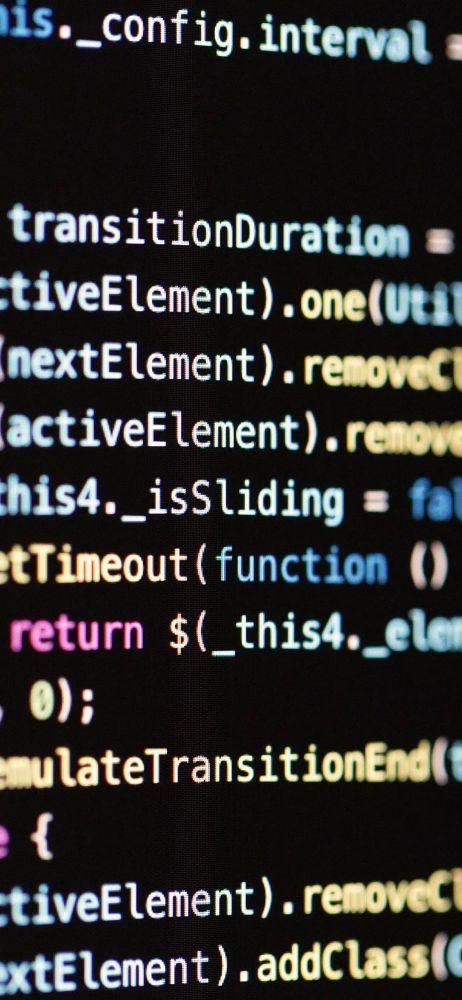2024年2月6日发(作者:)

第37课
1. truth n 真相、真实
To tell you the truth “说实话”
truth n→true adj真的、真实的→truly adv真实地、确实地
v. 决定;作出判断
Li Ming decides to buy a new bike. 李明决定买一辆新自行车。
I can't decide which book to buy. 我不能决定买哪本书。
2. decide的具体用法如下:
(1)decide to do sth.=make up one's mind to do sth.,某事”,其否定形式是decide not to do sth.。如:
意为“下定决心做Tom decided to go home during the Spring Festival.
期间回家。
汤姆决定春节(2)decide后接“疑问词+不定式”。如:
Did she decide when to start? 她决定什么时候出发了吗?
3. as usual 像往常一样
Yesterday evening, I ate ten donuts as usual.
吃了十个面包圈。
昨天晚上我像往常一样usual样”,表示一种习惯性动作的重复。是形容词,意为“通常的”,常构成短语
as usual,意为“像往常一
如usually:I usually go to school by bike.作副词,意为“通常”。
我通常骑自行车去上学。
4. health n. 健康;健康状态
It's not good for your health. 这对你的健康没有好处。
Eating vegetables is good for your health.吃蔬菜对你的健康有好处。
health 是不可数名词,其形容词形式为healthy。
healthy中派生构词法的一种。是由名词health类似的单词还有加“-y”构成的,名词加rain—“rainy, cloud-y”变形容词是英语—cloudy,
snow—snowy, wind—windy等。
5.说实话 To tell you the truth, I decided to change my eating habits.
, 我决定改变我的饮食习惯。
(1)to tell (you) the truth相;真实”, 其形容词形式为意为true“说实话。
”, 其中truth是名词, 意为“真(2)habit是名词, 意为“习惯;行为”。
habit 的常用搭配:
eating/living habits 饮食/生活习惯 good/bad habits 好/坏习惯
develop a habit 养成习惯 change the habit 改变习惯
6.用来询问某动作或状态发生的频率,其答语一般含有 how often多久一次
always、usually易混辨析、often how long,、never,how often或 twice a day,how soon等表示频率的词或短语。与 how far
how long表示"时间多久或物体多长"。
how often表示"多久一次",提问频率。
how soon表示"多久之后",答语常为"in+时间段"。
how far表示"多远”,提问距离。
第38课
1. remember v. 记得;记起
Running helps us remember information. 跑步帮助我们记忆信息。
remember作及物动词,意为“记得;记起”,其反义词是forget。remember sth./sb.意为“记住某物/人”。
remember to do sth.与remember doing sth.
remember to do sth.意为“记得去做某事”,表示该事情还没有做。
remember doing sth.意为“记得做过某事”,表示该事情已经做了。
2. keep v. 保持;保留
We can make a fire to keep warm.我们可以生火来取暖。
You should keep practicing your spoken English.的英语口语。
你应该坚持练习你keep的用法如下:
keep+形容词; 保持某种状态;
keep sb./sth.+形容词使某人/某物保持某种状态
keep+sth.保存/保管某物
keep doing sth.; 坚持/持续做某事;
keep sb./ sth. 让某人/某物一直做某事
keep的常用搭配: keep away (from) 离开, 远离
keep a record 保持纪录 keep in touch (with) (与……)保持联系
g helps us remember information.
动名词作主语时如,谓语动词用单数形式。该句的主语为跑步帮助我们记忆信息。“Running”。
辨析: Doing more exercise makes us healthier. information、message与news
多做运动使我们更健康。
information 信息 主要强调消息、情报、资料等,是不可数名词。
news
众发布的社会各方面的最新消息消息,报道 一般指通过广播、电视、报纸等新闻媒体向大,侧重“新”字,是不可数名词。
message “信息、消息”可数名词 常指口头上或书面告知的消息。
3. How can we stay healthy? 我们如何保持健康?
和stay healthy意为“保持健康”, 同义短语为keep healthy, 其中stay我们学过的系动词keep 是系动词,
:
后接形容词。
类别 含义 例词
感官系动词 ……起来 look, sound, smell, taste, feel
变化系动词 变得 become, turn, get
持续系动词 保持 keep, stay
第39课
1. success n. 成功;胜利
Sports Day was a great success this year! 今年的运动会非常成功!
修饰success, 可以加冠词意为“成功a或;胜利”an。success, 是不可数名词。如果前面有形容词可与have, get搭配。have success
in意为“在某方面成功”
与success相关的词形转换:
2. throw v. 投,掷;扔
There were ten different events like running, long and high jumps, and
ball throwing.有十种不同的比赛项目,像跑步、跳远、跳高和掷球。
He threw his shirt to someone in the crowd.群中的一个人。
他把他的衬衫扔给了人throw 的过去式为threw,过去分词为thrown。常用搭配:throw
sb.如: Don't throw it to him; give it to him.意为“把某物扔给某人”。
别扔给他,递给他。
如(1):Someone threw a stone at the car. throw sb./sth. 意为“把某物扔向某人有人朝汽车扔了一块石头。/某物。
(2)throw away意为“扔掉”。
That old chair should be thrown away.那把旧椅子应该被扔掉了。
3. There were ten different events like running, long and high jumps,
and ball throwing.
掷球。
有十种不同的比赛项目,像跑步、跳远、跳高和(1)它还可以指任何大小事件 event意为“事件”,在本句中指体育运动中的比赛项目。另外如:team event 团体项目; an Olympic event,尤其指历史上的重大事件。奥运项目
,(2)或物中的几个例子 like prep,相当于;for examplesuch as、for example一般只列举同类人或物中的一个。。such as用来罗列同类人
I love many different kinds of sports, such as running, playing football
and swimming.我喜欢许多不同种类的运动,如跑步,踢足球和游泳。
There is a similar word in many languages, for example in French and
Italian.在许多语言,譬如法语和意大利语中都有相似的词。
第40课
1. used to 过去常常
They
跃。
used to be very active together. 他们过去在一起的时候很活used to do sth.或存在的状态表示“过去常常做某事”介词,而现在却不再发生。其中的,表示过去经常发生的动作to是不定式符号辨析,所以其后接动词原形。,不是be used to doing sth.与be used to do sth.
be used to doing sth.
动词时要用动名词。意为
“习惯于做某事”,其中的to是介词,后接be used to do sth.
构。
表示“被用来做某事”,是动词use的被动语态结He is used to living in the country.他习惯于住在乡村。
This kind of machine is used to make books.的。
这种机器是用来制作书2. weight n. 重量
And he is putting on weight.并且他的体重正在增加。
加weight;lose weight
作名词减肥, 意为“重量”;the weight of,
………的重量。常见搭配:put
on weight 体重增weight示人或物体的名词或代词的动词形式为weigh,词。
;还可表示“有……重”意为“称……的重量”,后接表示重量的,其后直接接表3. lucky adj. 幸运的;侥幸的
But I feel really lucky. 但是我感到很幸运。
success 作名词,意为“成功;胜利”。其反义词为failure,意为“失败”。
succeed
作动词其反义词为,常用短语fail,意为:succeed in doing sth.,“失败”。
意为“成功做某事”。
successful 是由名词success和后缀-ful构成的形容词。
successfully 是由形容词successful和后缀-ly构成的副词。
lucky为形容词,是由“名词 luck+后缀-y”构成的,在句中可作表语
或定语。
luck n
幸运地运气→un→luckily adj
lucky adj
不幸地幸运的
→unlucky adj 不幸的→luckily adv4. Tim is not active any more. 蒂姆不再活跃了。
[子中的系动词、助动词、情态动词等缩写在一起。探究] not…any more意为“不再……”,相当于no more, not修饰短暂性动词,指数量或程度上的“不再”增加。not常和句
…any more5.他看太多的电视并且玩太多的电脑游戏。 He watches too much TV and plays too many computer games.
too many, too much与much too
too many 意为“太多”, 修饰复数可数名词。
too much 意为“太多”, 修饰不可数名词。
much too 意为“太……”, 修饰形容词和副词。
There are too many mistakes in this essay.这篇文章错误太多。
There is too much traffic on the road.路上有太多的车辆。
The other one is much too expensive.另一个太贵了。
6. put on 增加(体重)、穿上(动作)、上演
put out 熄灭 put up 张贴 举起 put off 推迟
put away 把······收拾起来 put down 写下、记下
put forward 提出
7. get out 出去 get out of “从······出去” get on 上车
get off 下来、下车 get to 到达 get in进入get back 回来
get up 起床 get along/on well with 与······和睦相处
第41课
1. spend v. 用(钱);花(钱)
They spent a lot of time outdoors. 他们花费大量的时间在户外。
The lady spends a lot of money on clothes.服。
这位女士花大量的钱买衣They spent two years (in) building this bridge.
他们花了两年时间修建这座桥。
spend构为“意为“花费”sb. spend(s)…,on sth.常指花费时间、金钱等”和“sb. spend(s),主语只能是人…(in) doing sth.,常用结”。
[辨析] 不同的“花费”:
2. at that time那时
At that time, there were no supermarkets. 那时没有超市。
at that time 意为“那时”, 常用于过去时态。
time的常用短语:
at this time 在这时 at the same time 同时 on time准时
have a good time 玩得开心 all the time 一直 in time及时
3. They called this dance the pow-wow.他们把这种舞蹈叫作帕瓦。
同义词为call在本句中用作及物动词,意为“叫作为……”。name。“call/name sb./sth.+n.,”意为“称呼某人称呼”,后可接双宾语/某物,其如: Her parents call her Annie.
她的父母叫她安妮。
4. Some------others------.一些……另一些……
others在此处表示泛指,表示剩下的一部分。
Some people are singing and others are dancing.些人在跳舞。
一些人在唱歌,另一some------the others------表示“一些------另一些(其余的全部)------"
be结构中的be动词的确定
Some peeople are singing and the others are dancing
一些人在唱歌,其余的人在跳舞。
(1)there
第42课
持一致。主语是不可数名词或单数可数名词时用be结构中的谓语动词be在人称和数上应与其后的主语保数可数名词时用are/were。如:
is/was,主语是复1. get up起床
There was some money in the purse. 钱包里有些钱。
I usually get up early. 我通常起床早。
There are ten students in the office. 办公室里有十名学生。
get up意为“起床”,是动词短语,在句中作谓语,也可单独使用。
(2)get的常用短语:
在人称和数上保持一致当句中有几个并列的主语时,即遵循“,be就近原则动词要与离其最近的一个主语”。如:
get on上车 get off下车 get together相聚
There is a boy, a girl and two women in the house.
get out 出去 get over克服 get away 离开;逃走
房子里有一个男孩,一个女孩和两位妇女。
2 develop v. 发展;使形成;培育
3. there be结构的句型转换
Develop
(1)否定句完善你自己your
!
good habits and improve yourself!培养你的好习惯并
there be句型的否定形式通常在be动词后加not(在口语中be常和Do you want to develop a business in this city?
展业务吗?
你想在这个城市发not缩写在一起)。当肯定句中有some时,要将其变成any。如:
There are some children in the picture.照片上有一些孩子。
develop作动词, 意为“发展;使形成;培育”。
→There aren't any children in the picture.照片上没有孩子。
develop a habit意为“养成习惯”,相当于form a habit; develop from…(2)into把一般疑问句及其答语be(is/are)提到there前
如…意为“从……发展成……”。
答语是“Yes, there+be(is/are).”;
,首字母要大写,句末用问号即可。其肯定否定答语一棵大树。: A small seed can develop into a tall tree.
一粒小小的种子能长成为“No,
there+be(is/are)+not.”,其中“be(is/are)+not”常用缩写形式。如:
(1)—Are there two cats in the tree?树上有两只猫吗?
如:The development of his company is rapid.
develop的名词形式是development。
他的公司发展迅速。
—Yes, there are./No, there aren't.是的,有。/不,没有。
(2)意为“发达的”。 developing是形容词,意为“发展中的”;developed(3)特殊疑问句及其答语
如:China is a developing
也是形容词,①提问句子的主语(包括主语前的修饰语)时,一律用“What is/was+country, and America is a developed
地点状语?”(无论主语是单数还是复数都用is/was。)如:
country. 中国是一个发展中国家,美国是一个发达国家。
There are some birds in the tree. 树上有一些鸟。
3.I still don't always make my bed, but I'm working on it.
我仍然不总是整理我的床铺,但是我正在改进。
→What's in the tree?树上有什么?
②对there be后面的地点状语进行提问时,用“Where+be(is/are)+主(1)make one's bed意为“ 整理床铺”, make在此译为“整理”。语?”。如:
one's要根据句意变为物主代词或名词所有格。
There is a TV in the living room. 客厅里有一台电视。
(2)work on意为“从事于, 致力于”, 其中on是介词。如:
→Where is the TV?电视在哪里?
I am working on my new book. 我正在努力完成我的新书。
③提问可数名词(主语)前的数量时,用how many, 句型结构为5. tooth n 牙齿→teeth
“How many+复数可数名词+are/were there+其他?”(many修饰复数toothbrush 牙刷 toothache牙疼 brush one’s teeth 刷牙
可数名词,be要用are/were。)如:
词条 常用结构 用法
There are five books in my backpack.我的背包里有五本书。
take
It takes/took sb.+做某事花了某人多长时间。时间+to do sth.
主语是常指花费时间。it(形式主语
),
→How many books are there in your backpack?你的背包里有几本书?
pay
sb. pay(s)/paid (某人为某物付金钱(多少) for sth.
be与have/has/had的区别
)钱
主语是人, 指花费金钱。
there
表示“某人拥有某物be 句型表示“某物”,是“/所属人存在于某个地方”关系,主语通常是人。如”,有“存在”:
关系;havecost
某物花了sth. cost(s) (sb.)+(某人)多少钱金钱
主语是物, 指花费金钱。
There is going to/will be a class meeting tomorrow.
There be 句型
明天将要开一个班会。
1. there be句型是一种常见的表示“存在”的句型。
I have a book. 我有一本书。
(1)“There be+sb./sth.+地点状语”意为“某地有某人/物”。如:
There is a flower in the bottle.瓶子里有一朵花。
(2)“There be+sb.+doing sth.”意为“某人正在做某事”。如:
There are some children playing basketball. 一些孩子正在打篮球。

本文发布于:2024-02-06 11:47:41,感谢您对本站的认可!
本文链接:https://www.4u4v.net/it/170719126160855.html
版权声明:本站内容均来自互联网,仅供演示用,请勿用于商业和其他非法用途。如果侵犯了您的权益请与我们联系,我们将在24小时内删除。
| 留言与评论(共有 0 条评论) |